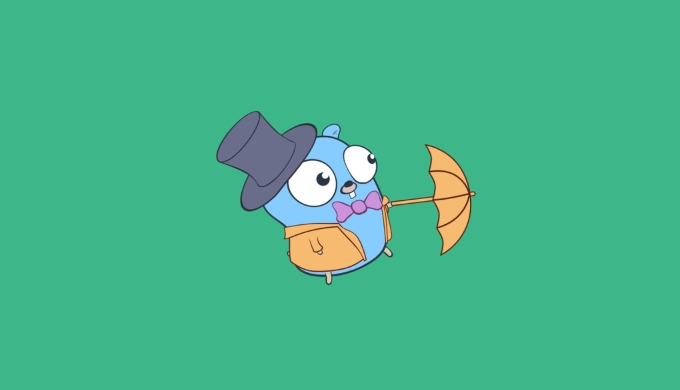What is the difference between a goroutine and a thread in golang?
Jun 25, 2025 pm 05:56 PMIn Go, the main difference between goroutine and thread is management and overhead. 1. goroutine is managed by the Go runtime, while threads are managed by the operating system; 2. goroutine is lighter, with a small initial stack and dynamic growth, which can easily create tens of thousands of concurrent execution units; 3. Goroutine communication through channel to avoid synchronization problems caused by shared memory; 4. goroutine switching overhead is smaller, and Go scheduler automatically optimizes execution; 5. Threads are suitable for CPU-intensive tasks, while goroutine is more suitable for high concurrency scenarios.

In Go, the difference between a goroutine and a thread comes down to how they're managed and how much overhead they carry. Threads are managed by the operating system, while goroutines are managed by the Go runtime. That might sound abstract, but it has real-world implications for performance, scalability, and ease of use.

Goroutines Are Lightweight
One of the main selling points of goroutines is that they're lightweight compared to threads. A typical thread in most operating systems uses megabytes of memory for its stack, mostly because the stack size needs to be pre-allocated and grows only up to a limit.

Goroutines, on the other hand, start with a small stack (a few kilobytes) and grow dynamically as needed. The Go runtime takes care of managing this automatically, so you don't have to worry about stack overflows or wasting memory.
This means:

- You can easily run tens of thousands of goroutines without exhausting system resources.
- Goroutines are cheaper to create and destroy than threads.
- They're ideal for concurrency patterns like spawning one goroutine per incoming request.
Threads Are Managed by the OS; Goroutines by the Go Runtime
Threads are scheduled directly by the operating system. Every time you create a thread, you're asking the OS to allocate resources and manage schedule. This adds overhead, especially when dealing with large numbers of threads.
Goroutines are multiplexed onto a smaller number of OS threads by the Go scheduler. The Go runtime handles when and where each goroutine runs. This gives you more concurrency with less context-switching overhead.
Some practical consequences:
- Less switching cost between goroutines than between threads.
- The Go runtime can optimize execution based on workload.
- You don't need to manually manage thread pools or worry about oversubscription.
Communication Between Goroutines Is Easier
Go encourages a style of programming where goroutines communicate via channels rather than sharing memory. Channels provide a clean way to pass data between concurrent units safely.
With threads, shared memory is the usual communication mechanism, which often leads to complex synchronization using mutexes and condition variables—prone to bugs like deadlocks and race conditions.
So with goroutines:
- You can send values ??across goroutines using channels (
chan). - It's easier to build pipelines or worker pools.
- Built-in language support makes this pattern natural and readable.
Performance Considerations
When comparing performance, goroutines usually outshine threads due to lower overhead. Creating a new goroutine is fast—often just a few nanoseconds. And since the Go scheduler manages them efficiently, you get better throughput under high concurrency.
Threads, being heavier, take longer to start and require more memory. High numbers of threads can lead to "thread thrashing," where the OS spends more time switching between threads than doing actual work.
But keep in mind:
- For CPU-bound tasks that don't require massive concurrency, threads may perform similarly.
- Blocking operations inside a goroutine can affect performance if not handled carefully.
- The Go runtime does a good job of handling blocking calls by creating more threads underneath.
Basically that's it.
The above is the detailed content of What is the difference between a goroutine and a thread in golang?. For more information, please follow other related articles on the PHP Chinese website!

Hot AI Tools

Undress AI Tool
Undress images for free

Undresser.AI Undress
AI-powered app for creating realistic nude photos

AI Clothes Remover
Online AI tool for removing clothes from photos.

Clothoff.io
AI clothes remover

Video Face Swap
Swap faces in any video effortlessly with our completely free AI face swap tool!

Hot Article

Hot Tools

Notepad++7.3.1
Easy-to-use and free code editor

SublimeText3 Chinese version
Chinese version, very easy to use

Zend Studio 13.0.1
Powerful PHP integrated development environment

Dreamweaver CS6
Visual web development tools

SublimeText3 Mac version
God-level code editing software (SublimeText3)
 What are the differences between Runnable and Thread in Java?
May 07, 2023 pm 05:19 PM
What are the differences between Runnable and Thread in Java?
May 07, 2023 pm 05:19 PM
There are two ways to implement multi-threading in Java, one is to inherit the Thread class, and the other is to implement the Runnable interface; the Thread class is defined in the java.lang package. As long as a class inherits the Thread class and overrides the run() method in this class, it can implement multi-threaded operations. However, a class can only inherit one parent class, which is a limitation of this method. Let’s look at an example: packageorg.thread.demo;classMyThreadextendsThread{privateStringname;publicMyThread(Stringname){super();this
 Start a new thread using java's Thread.start() function
Jul 24, 2023 pm 11:01 PM
Start a new thread using java's Thread.start() function
Jul 24, 2023 pm 11:01 PM
Use Java's Thread.start() function to start a new thread. In Java, we can use multi-threading to execute multiple tasks concurrently. Java provides the Thread class to create and manage threads. The start() function in the Thread class is used to start a new thread and execute the code in the run() method of the thread. Code example: publicclassMyThreadextendsThread{@Overr
 Five ways to fix Thread Stuck in Device Driver blue screen
Mar 25, 2024 pm 09:40 PM
Five ways to fix Thread Stuck in Device Driver blue screen
Mar 25, 2024 pm 09:40 PM
Some users reported that after installing Microsoft's March Win11 update patch KB5035853, a blue screen of death error occurred, with "ThreadStuckinDeviceDriver" displayed on the system page. It is understood that this error may be caused by hardware or driver issues. Here are five fixes that will hopefully resolve your computer blue screen problem quickly. Method 1: Run system file check. Run the [sfc/scannow] command in the command prompt, which can be used to detect and repair system file integrity issues. The purpose of this command is to scan and repair any missing or damaged system files, helping to ensure system stability and normal operation. Method 2: 1. Download and open the "Blue Screen Repair Tool"
 How does Thread generate an interface in java?
May 17, 2023 pm 12:49 PM
How does Thread generate an interface in java?
May 17, 2023 pm 12:49 PM
In java, when it comes to threads, Thread is essential. A thread is a lighter scheduled executor than a process. Why use threads? By using threads, you can separate resource allocation and execution scheduling in operating system processes. Each thread can not only share process resources (memory address, file I/O, etc.), but can also be scheduled independently (thread is the basic unit of CPU scheduling). Note 1. Thread is the most important class for making threads, and the word itself also represents thread. 2. The Thread class implements the Runnable interface. Instance publicclassThreadDemoextendsThread{publicvoidrun(){for(inti=0
 Overview of Thread threads in C#
Feb 18, 2024 am 11:20 AM
Overview of Thread threads in C#
Feb 18, 2024 am 11:20 AM
Introduction to Thread in C#, specific code examples are required. In C#, Thread (thread) is an independent execution path for executing code. By using threads, we can execute multiple tasks in parallel and improve the performance and responsiveness of the program. This article will introduce the basic concepts, usage and related code examples of Thread threads in C#. 1. The basic concept of threads Threads are the basic execution units in the operating system. In C#, the Thread class is the primary tool for creating and manipulating threads. Threads can
 Java uses the start() function of the Thread class to start a new thread
Jul 24, 2023 am 11:31 AM
Java uses the start() function of the Thread class to start a new thread
Jul 24, 2023 am 11:31 AM
Java uses the start() function of the Thread class to start a new thread. In Java, multi-threading is a concurrent execution method that can perform multiple tasks at the same time. In order to implement multi-threading, the Thread class is provided in Java, through which threads are created and controlled. Among them, the start() function is used to start a new thread. The function of the start() function is to put the thread into the ready state and automatically call the thread's run() method. When a thread calls start(
 iPhone 15 Pro welcomes Apple's latest network technology: Thread
Sep 18, 2023 pm 11:05 PM
iPhone 15 Pro welcomes Apple's latest network technology: Thread
Sep 18, 2023 pm 11:05 PM
iPhone15Pro and iPhone15ProMax support the Thread mesh network protocol. Thread networking technology is listed as a new feature on Pro models but is not included in iPhone 15 and iPhone 15 Plus. Apple said that the iPhone 15 Pro is the first smartphone with a Thread radio, which can be used to directly control smart home products that support Thread. Thread has been added to the HomePod mini and Apple TV before, but no other Apple devices have Thread connectivity. In a press release for the iPhone 15 Pro models, Apple explained that Thread is the "home
 Use java's Thread.sleep() function to make the program sleep for a period of time
Jul 25, 2023 pm 02:39 PM
Use java's Thread.sleep() function to make the program sleep for a period of time
Jul 25, 2023 pm 02:39 PM
Use Java's Thread.sleep() function to make the program sleep for a period of time. In Java programming, we often encounter situations where we need to let the program sleep for a period of time. In order to realize this function, Java provides the Thread.sleep() function. This article will introduce the usage of Thread.sleep() function and sample code in detail. The Thread.sleep() function is an important function in Java multi-thread programming. Its function is to make the current thread sleep for a specified period.






